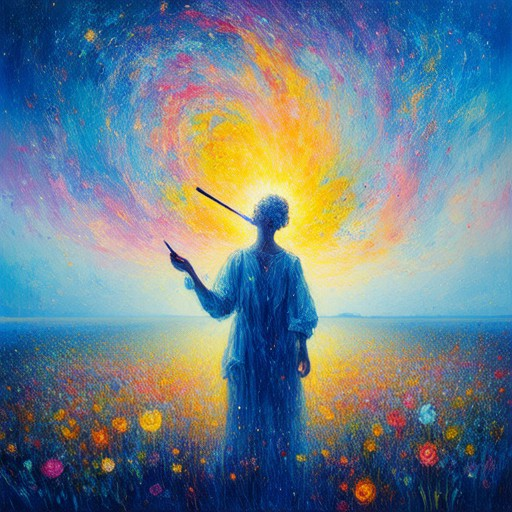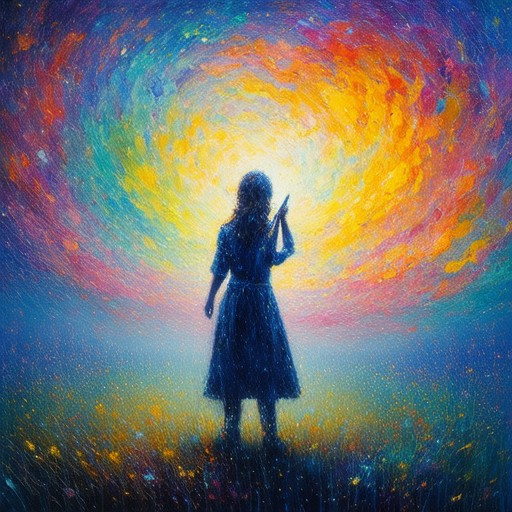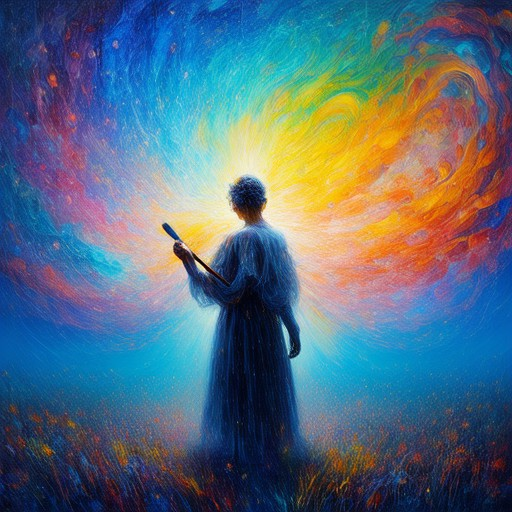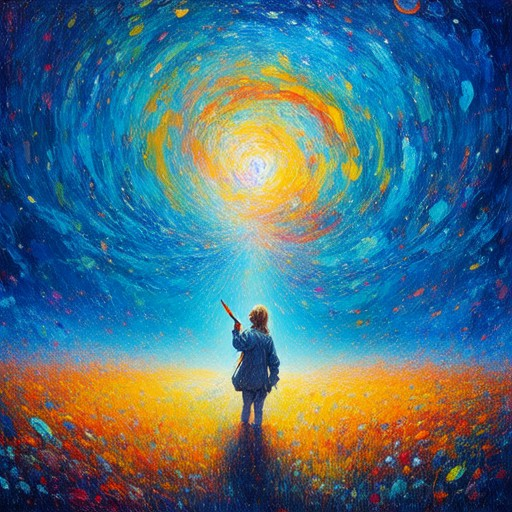Discovering the world of art is a transformative experience that can unlock a whole new dimension of creativity and self-expression. Whether you’re a complete novice or returning to your artistic roots, finding the right path to start creating art can feel overwhelming. From understanding the basics of materials and techniques to embracing experimentation and overcoming creative hurdles, this guide offers a comprehensive roadmap to help you ignite your passion and develop your unique artistic voice. With insights into mastering your style, building a consistent routine, and exploring the rules that define artistic success, this article is designed to empower you to begin—or reignite—your journey toward creating art that truly reflects who you are. Let’s dive into the fundamentals of starting art, uncovering your creative potential, and finding joy in the process.

How to Start Drawing for Beginners
Starting to draw can be an exciting journey, but it may seem overwhelming at first. Here’s a step-by-step guide to help you begin:
1. Gather Your Materials
Equip yourself with essential tools:
- Paper – Choose sketch paper or canvas boards for flexibility.
- Pencils – graphite pencils are great for shading and detail.
- Eraser – a stump eraser is ideal for blending and creating soft edges.
- Colored Pencils – for adding color once you’re comfortable with black and white.
- Brightness – use a bright light or a lightbox to aid in shading and perspective.
2. Set Up Your Space
Find a quiet, well-lit area to work. Natural light is beneficial, but a desk lamp with daylight settings can also work wonders.
3. Learn the Basics of Drawing
Master the fundamentals with these techniques:
- Gesture Drawing: Practice quick 2-minute sketches of everyday objects to capture movement and rhythm. This helps develop your observational skills.
- Grids: Use grid paper to draw straight lines and maintain proportions. This technique is especially useful for architectural subjects.
- Perspective: Learn one-point perspective by locating the vanishing point and drawing lines converging toward it. Practice with simple scenes like tabletops or cityscapes.
4. Explore Tutorials and Resources
Find guided resources to enhance your learning:
- Visit Artful Journey for comprehensive guides on various art forms and techniques.
- Watch YouTube channels dedicated to drawing tutorials for beginners.
- Join online art communities like Reddit’s r/drawing or DeviantArt for support and feedback.
5. Develop a Routine
Consistency is key to improvement. Dedicate 30 minutes daily to practice, focusing on different subjects each day:
- Still lifes on Mondays
- Portraits on Tuesdays
- Landscape on Wednesdays
- Abstract designs on Thursdays
- Freehand sketches on Fridays
6. Seek Feedback and Improve
Share your work with peers for constructive criticism:
- Upload your sketches to social media platforms or art forums.
- Join local art classes or workshops for in-person feedback.
- Participate in critique sessions to identify strengths and areas for growth.
7. Experiment with Techniques
Explore different drawing methods and styles:
- Shading: Practice creating gradients and textures using pencil shadings.
- Composition: Arrange elements in your drawings to lead the viewer’s eye through the frame, using leading lines and negative space effectively.
- Color Theory: Experiment with primary, secondary, and tertiary colors. Try mixing colors on paper to see the resulting hues.
8. Stay Motivated and Celebrate Progress
Keep track of your journey by maintaining a sketchbook or digital portfolio. Review your past works to see how much you’ve improved. Remember, every session brings you closer to mastering the craft.
By following these steps, you’ll build a strong foundation in drawing and gradually develop your unique style. Happy drawing!
How to Start Creating Your Own Art
Creating your own art can be a rewarding journey, but it requires patience, curiosity, and a willingness to learn. Here’s a step-by-step guide to help you get started:
1. Choose Your Medium
Decide which medium you’d like to work with. Some popular options include:
- Painting : Oil, acrylic, or watercolor paints
- Drawing : Pencils, charcoal, or markers
- Digital Art : Software like Photoshop or Procreate
- Crafts : Sculpting, pottery, or fabric art
2. Gather Your Supplies
Start by gathering essential art supplies. You can find affordable starter kits at local art supply stores or online shops like Art.com . Don’t forget:
- Canvas or paper
- Paints, brushes, or markers
- Sketchbooks and pencils
- Reference guides or tutorials
3. Find Inspiration
Seek inspiration from museums, galleries, and artists. Visit virtual galleries like the Louvre Museum or watch tutorials on platforms like YouTube. Keep a sketchbook to document your ideas and progress.
4. Practice Basic Techniques
Begin with fundamental techniques. Take online courses or attend workshops to learn drawing, coloring, and composition. Practice Still Life art to understand form, shape, and perspective. Use reference images to guide your creations.
5. Stay Consistent and Dedicated
Set aside time daily to work on your art. Even 30 minutes can make a difference. Share your work on platforms like Instagram or DeviantArt to connect with a supportive community and gain feedback.
6. Seek Feedback and Improve
Join art groups or forums such as Reddit’s r/art or Facebook’s Art Community. Share your work and ask for critiques to identify strengths and areas for improvement. Be open to learning from others’ perspectives.
7. Experiment and Explore
Don’t hesitate to try new styles or mediums. Experiment with watercolors, collage, or mixed media. Embrace mistakes as part of the creative process and enjoy the journey of discovery.
8. Develop Your Unique Style
Look at works by artists you admire and analyze what makes their style distinct. Attend art fairs or workshops to expose yourself to diverse perspectives. Over time, you’ll develop a style that reflects your personality and vision.
Remember, creating art is a personal journey. Progress may be slow, but every step forward is a victory. With dedication and curiosity, you’ll soon find your unique voice in the world of art.

How to Start Creating Art
Creating art begins with curiosity and a willingness to explore. Here’s a step-by-step guide to help you get started:
- Explore Your Interests:** Identify what excites you. Are you drawn to painting, sculpture, photography, or digital art? Knowing your passion will guide your journey.
- Gather Supplies:** Equip yourself with essentials like sketchbooks, canvas, paints, brushes, and maybe some art Reference guides to inspire your work.
- Find a Creative Space:** Set up a dedicated area where you can focus without distractions. A quiet corner or a small studio can make all the difference.
- Practice Regularly:** Consistency is key. Dedicate time daily to create, even if it’s just for 15 minutes. Over time, your skills will improve.
- Learn Techniques:** Watch tutorials, read books, or take classes to master techniques. Practice challenges to push your boundaries.
- Embrace Imperfection:** Don’t fear mistakes. Every great artist has made them. See errors as opportunities to grow.
- Experiment with Media:** Try different mediums like watercolor, oil paint, collage, or digital art. Mixing media can lead to exciting results.
- Stay Inspired:** Surround yourself with art. Visit galleries, watch documentaries, or join communities like Artful Journey for support and inspiration.
- Express Your Vision:** Experiment with themes and styles. Combine textures, colors, and unexpected elements to create something uniquely yours.

The 7 Rules of Art
The principles of art and design are essential for creating balanced and harmonious compositions. Here are the seven fundamental rules of art, which guide artists in achieving success in their creations:
- Balance :
Balance in art refers to the equal distribution of weight or importance across a composition. This can be achieved through symmetry, where elements are mirrored on either side, or asymmetry, where imbalance is intentional but still feels harmonious. Examples include paintings like Max Weber’s “The Star of David” or Jackson Pollock’s drip paintings, where the placement of shapes and colors creates a sense of equilibrium. - Contrast :
Contrast is the use of differing elements to create visual interest. This can be seen in color contrasts, such as the vibrant hues in Van Gogh’s “Starry Night,” or in texture contrasts, like the smooth brushwork against rough surfaces in abstract art. Contrasts can also refer to light and dark, shape and form, or warm and cool colors, all working together to draw the viewer’s attention. - Emphasis :
Emphasis is the technique of focusing attention on a particular element in the artwork. This can be achieved through size, color, shape, or placement. For example, in Edward Munch’s “The Scream,” the distorted human figures and vibrant colors emphasize the emotional turmoil conveyed in the piece. - Movement :
Movement in art suggests the illusion of change or flow within the composition. This can be dynamic, like the swirling forms in Klimt’s “The Kiss,” or static, where elements appear frozen in time. Movement can be implied through lines, curves, or gradients that suggest motion. - Pattern :
Patterns in art involve the repetition of shapes, colors, or textures to create a unified whole. These patterns can be geometric, like the concentric circles in a mandala, or organic, like the flowing lines in a watercolor painting. Patterns often contribute to the overall harmony and unity of a work. - Rhythm :
Rhythm in art is akin to the beat of music, creating a sense of rhythm and timing. This can be achieved through repeating shapes, consistent spacing, or a steady progression of colors and forms. For instance, in Mondrian’s “Composition in Red, Blue, and Yellow,” the grid-like structure and primary colors create a strong rhythmic effect. - Unity/Variety :
Unity refers to the cohesion and harmony of the artwork, where all elements work together seamlessly. Variety introduces diversity, preventing the artwork from becoming monotonous. Achieving unity/variety requires balancing sameness and difference, ensuring the composition feels complete and engaging without being overwhelming.
By mastering these principles, artists can create works that are visually appealing, emotionally resonant, and structurally sound.
The Golden Rule of Art
The golden rule of art, often associated with the golden ratio (φ), is a fundamental concept in aesthetic design and composition. This mathematical ratio, approximately 1.618, is derived from the equation φ = (x + 1)/x, where x represents the larger segment of a divided line. The golden ratio is considered a universal law of beauty and balance in art, influencing everything from painting and sculpture to architecture and photography.
Applications in Art Forms
1. **Painting**: Artists frequently use the golden ratio to arrange elements on a canvas. By positioning subjects and objects according to this ratio, they create compositions that are visually harmonious and engaging. This principle is evident in works by master painters like Leonardo da Vinci, whose use of perspective and proportional spacing enhances the viewer’s experience.
2. **Sculpture**: The golden ratio is essential in creating proportional and aesthetically pleasing sculptures. Michelangelo, for instance, employed this ratio in his iconic sculptures, ensuring that figures appeared perfect and idealized. This balance contributes to the perceived beauty and power of the artwork.
3. **Architecture**: The golden ratio is deeply rooted in architectural designs. Structures such as the Parthenon and Gothic cathedrals incorporate this ratio in their columns, arches, and overall layouts, creating a sense of grandeur and stability that appeals to the human eye.
Modern Relevance
Today, the golden ratio continues to influence modern artists and designers. Digital artists, for example, use software tools to apply the golden ratio in creating compositions that evoke a sense of order and symmetry. This timeless principle remains a cornerstone of artistic expression, bridging past and present.
By understanding and applying the golden ratio, artists can tap into a universal aesthetic that resonates deeply with viewers, making their work more impactful and memorable.

The Basic Rule of Art
The basic rule of art can be understood by mastering the elements of art and applying the principles of art effectively. Here’s a breakdown of the essential components:
Elements of Art
- Color : The use of hues and shades to create mood and atmosphere.
- Form : Three-dimensional shapes and structures that convey volume.
- Line : A continuous mark that can create movement, direction, and emphasis.
- Shape : Two-dimensional outlines that define objects and subjects.
- Space : Empty areas in a composition that create depth and interest.
- Texture : Surface qualities that add tactile interest to artwork.
- Value : The relative lightness or darkness of colors and tones.
Principles of Art
- Balance : Equal distribution of visual weight to create stability.
- Emphasis : Guiding the viewer’s eye to a particular part of the artwork.
- Harmony : Unifying elements to create a cohesive composition.
- Movement : Creating a sense of dynamism through flowing lines and patterns.
- Pattern : Repeating elements to establish rhythm and structure.
- Proportion : The relationship between size and scale in a composition.
- Repetition : Using recurring motifs to reinforce visual elements.
- Rhythm : A regularity of repeating elements that creates energy.
- Unity : Ensuring all parts of the artwork feel connected.
- Variety : Introducing contrast and diversity within a composition.
Conclusion
By understanding and skillfully applying these elements and principles, artists can create meaningful and impactful works that resonate with viewers. Explore further with our comprehensive art courses and discover how to master these fundamentals.




0 Comments